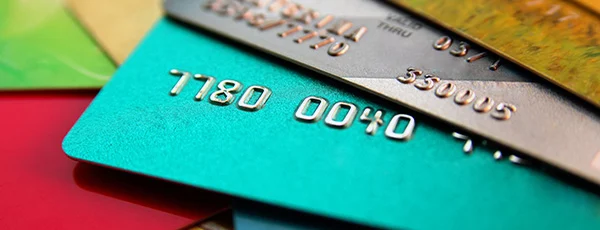What Is the Lowest Credit Score?

UpdatedJun 25, 2025
- The lowest VantageScore and FICO score is 300.
- Scores below 580 are considered poor, or high-risk by lenders.
- A low credit score usually makes it tough to get loans, credit cards, and favorable interest rates and terms on financial products.
Table of Contents
The lowest score you can have is 300, according to FICO® and VantageScore®, the two big systems lenders use. And the highest score is 850.
Understanding Credit Score Ranges
Every lender decides what its credit score ranges will be. A score considered excellent by one creditor might only be “very good” to another. Here’s an idea of how FICO and VantageScore break it down:
| FICO Range | FICO Score | VantageScore Range | VantageScore |
|---|---|---|---|
| Excellent | 800-850 | Superprime | 781-850 |
| Very Good | 740-799 | Prime | 661-780 |
| Good | 670-739 | Near Prime | 601-660 |
| Fair | 580-669 | Subprime | 300-600 |
| Poor | 300-579 |
Knowing these ranges could help you understand where your score fits and how it affects your borrowing options. Higher scores open more doors.
What Is a Low Credit Score?
A credit score is low when it falls into the fair or poor ranges:
FICO Score: Fair: 580-669; Poor: 300-579
VantageScore: Subprime: 300-600
Scores in these ranges can make it hard to get approved for credit cards and loans. Lenders are likely to offer you higher interest rates and worse terms.
Read: Credit score chart and score ranges
Why Is Your Credit Score So Low?
Your credit score is a three-digit number that reflects your history with credit accounts. Lenders take this score as a way to assess how likely it is that you’ll repay your debt.
Credit scores are calculated by FICO or VantageScore algorithms. If your score is low, it might be because of:
Money troubles. Late payments, big balances, or applying for too much credit. Serious issues like a bankruptcy or mortgage foreclosure could really hurt your score.
No credit history. New borrowers often start low because they haven’t built any track record.
More things that hurt your credit score
Several factors can push your score down toward the lowest credit score:
Missed payments. Being late or skipping payments lowers your score.
Using too much credit. Using a lot of your available credit can hurt your score.
Debts in collections. Unpaid bills sent to debt collectors have a significant negative impact.
Big financial events. Bankruptcy or foreclosure drastically reduce your score.
Too many applications. Applying for a lot of new credit in a short time can lower your score..
Mistakes on your report. Errors or fraudulent activity can drag down your score.
If you're struggling with debt, it might be time to consider debt relief.
Can You Have a Score Under 300?
No, 300 is the absolute lowest score for FICO and VantageScore.
You likely have many credit scores
You have multiple credit scores, including several versions from FICO and several from VantageScore. Scores differ because of constantly changing versions and different info.
New systems. Both FICO and VantageScore regularly update their systems with new versions, and lenders don’t all upgrade immediately to the new scores. For example, a mortgage lender might use FICO 5, which a credit card issuer relies on FICO 9. Each might give you a slightly different number.
Different info. Not all lenders report every account to all three credit bureaus (Equifax, Experian, TransUnion). That means the three bureaus may not all have the same information about you.
The things you do to improve your credit will have similar effects on all your scores.
Why Does it Matter if You Have a Low Credit Score?
A low score makes borrowing money more expensive. You’ll face higher interest rates, which add up. We’ve calculated how much you could save with a better score. Here’s what it looks like for a $400,000, 30-year mortgage (rates as of April 2025).
Potential mortgage savings
For a $400,000, 30-year fixed-rate mortgage (rates as of April 2025):
| FICO score | Annual percentage rate (APR) | Monthly payment | Total interest paid |
|---|---|---|---|
| 760-850 | 7.07% | $2,680 | $564,814 |
| 620-639 | 7.89% | $2,904 | $645,599 |
If your score is 635, you’d pay $224 more each month and $80,785 extra over the loan’s life, compared to someone with a 761 FICO score.
Potential auto-loan savings
For a $25,000, 60-month auto loan (rates as of April 2025):
| FICO score | Annual percentage rate (APR) | Monthly payment | Total interest paid |
|---|---|---|---|
| 781+ | 5.08% | $473 | $3,361 |
| 501-600 | 13% | $569 | $9,130 |
A lower score could cost you $5,769 more in interest over five years. And it’s not just mortgages and auto loans that penalize borrowers with below-average credit scores. You could expect the same results from commercial loans.
The bottom line: Expect to pay much higher interest rates on credit cards, personal loans, home equity loans, home equity lines of credit, and other sorts of borrowing until you boost your score.
Meanwhile, it’s not just the prospect of facing high interest rates that should bother you. A low score could also increase your insurance and other costs.
Ways to Improve Your Credit Score
The first rule when trying to improve your credit score is to always pay every bill on time. Doing this has the single biggest positive impact on your credit score.
The second rule concerns your credit card balances. You need to keep each balance below 10% of that card’s credit limit. This advice may come as a shock. And it may well take you a while to pay your balances down to that level. But it could be your quickest route to a higher score.
In the past, FICO recommended keeping each credit card balance below 30% of your credit limit. VantageScore still recommends doing that. But FICO recently changed its tune. The company now says: “Generally, keeping it below 10% (and consistently paying bills on time) can help you build and maintain a good FICO Score.”
How to Get a Free Credit Check
You can request a free copy of your credit report at the annualcreditreport.com, or get a free weekly credit report from the three credit bureaus:
Equifax, Experian, and TransUnion.
Why check your credit report?
You can find out what’s hurting your credit (and what’s going well). You can also request changes if there are errors. In a Consumer Reports study, 44% of those who checked their credit report said they found at least one mistake.
By reporting mistakes, you can fix your report and potentially raise your credit score.
Debt relief stats and trends
We looked at a sample of data from Freedom Debt Relief of people seeking a debt relief program during May 2025. The data uncovers various trends and statistics about people seeking debt help.
Credit Card Usage by Age Group
No matter your age, navigating debt can be daunting. These insights into the credit profiles of debt relief seekers shed light on common financial struggles and paths to recovery.
Here's a snapshot of credit behaviors for May 2025 by age groups among debt relief seekers:
| Age group | Number of open credit cards | Average (total) Balance | Average monthly payment |
|---|---|---|---|
| 18-25 | 3 | $8,864 | $274 |
| 26-35 | 5 | $12,615 | $380 |
| 35-50 | 6 | $16,479 | $431 |
| 51-65 | 8 | $17,240 | $528 |
| Over 65 | 8 | $17,811 | $498 |
| All | 7 | $15,142 | $424 |
Whether you're starting your financial journey or planning for retirement, these insights can empower you to make informed decisions and work towards a more secure financial future
Collection accounts balances – average debt by selected states.
Collection debt is one example of consumers struggling to pay their bills. According to 2023, data from the Urban Institute, 26% of people had a debt in collection.
In May 2025, 30% of debt relief seekers had a collection balance. The average amount of open collection account debt was $3,203.
Here is a quick look at the top five states by average collection debt balance.
| State | % with collection balance | Avg. collection balance |
|---|---|---|
| District of Columbia | 23 | $4,899 |
| Montana | 24 | $4,481 |
| Kansas | 32 | $4,468 |
| Nevada | 32 | $4,328 |
| Idaho | 27 | $4,305 |
The statistics are based on all debt relief seekers with a collection account balance over $0.
If you’re facing similar challenges, remember you’re not alone. Seeking help is a good first step to managing your debt.
Manage Your Finances Better
Understanding your debt situation is crucial. It could be high credit use, many tradelines, or a low FICO score. The right debt relief can help you manage your money. Begin your journey to financial stability by taking the first step.
Show source
Author Information

Written by
Cole Tretheway
Cole is a freelance writer. He’s written hundreds of useful articles on money for personal finance publications like The Motley Fool Money. He breaks down complicated topics, like how credit cards work and which brokerage apps are the best, so that they’re easy to understand.
What is the lowest credit score to buy a house?
Some people manage to get an FHA mortgage with a 500 credit score. But such cases are relatively few, not least because you need at least a 10% down payment to get approved.
If you make a 3.5% down payment, the minimum credit score for an FHA mortgage is 580. Conventional mortgages typically require a 620 credit score.
What is the lowest credit score to buy a car?
Unlike with mortgages, there is no minimum credit score for auto loans. You may find a dealer that will finance a loan even if you’re in “deep subprime” territory, which is a score in the 300-500 range.
However, Experian reckons that only 1.79% of all auto loans originated in 2021 were deep subprime loans. So you may have to seek out someone willing to play ball. And you can be pretty sure you’ll be paying a very high interest rate on such a loan.
What is the lowest FICO score?
FICO and VantageScore have the same floor on the credit scores that most people are familiar with: 300.



